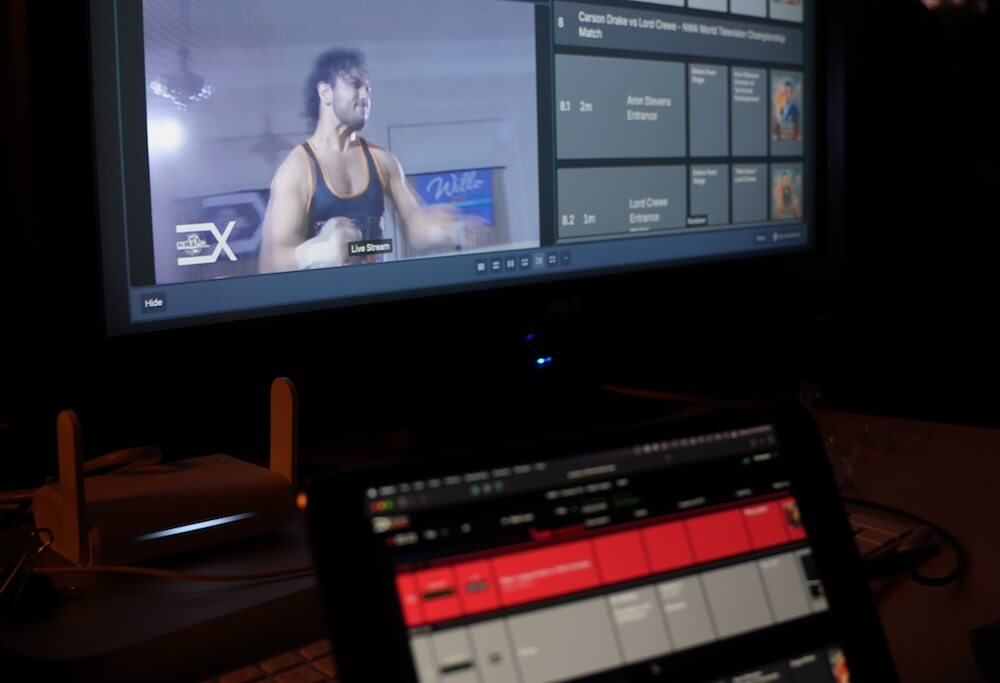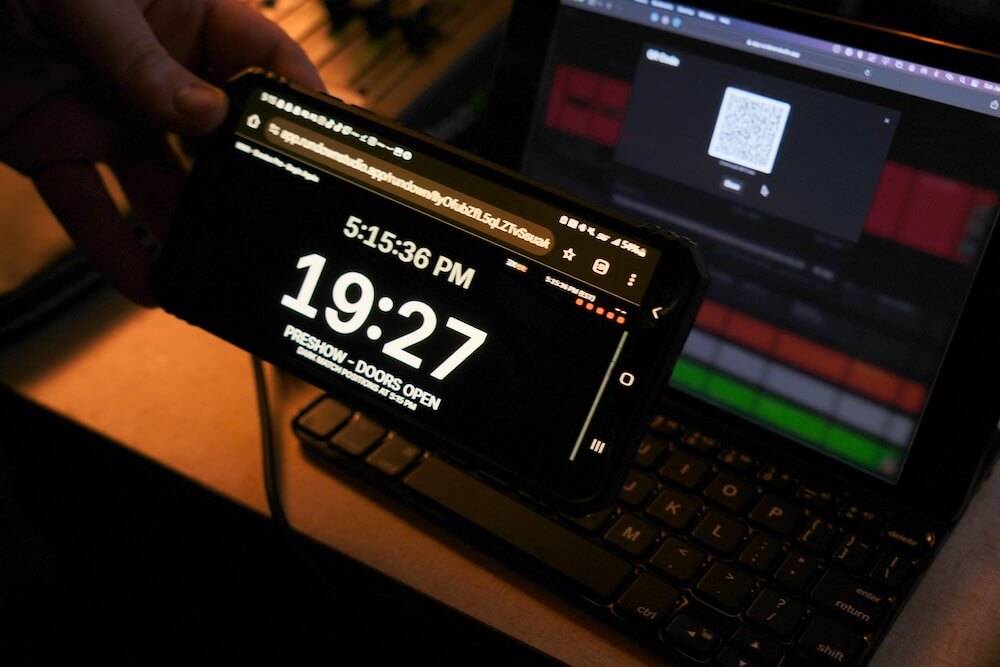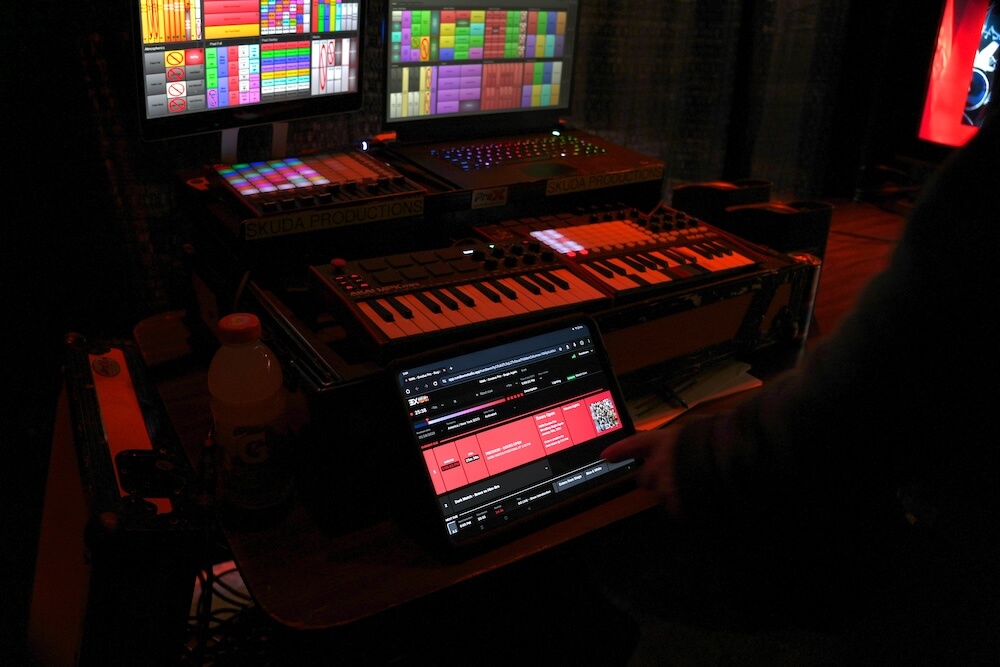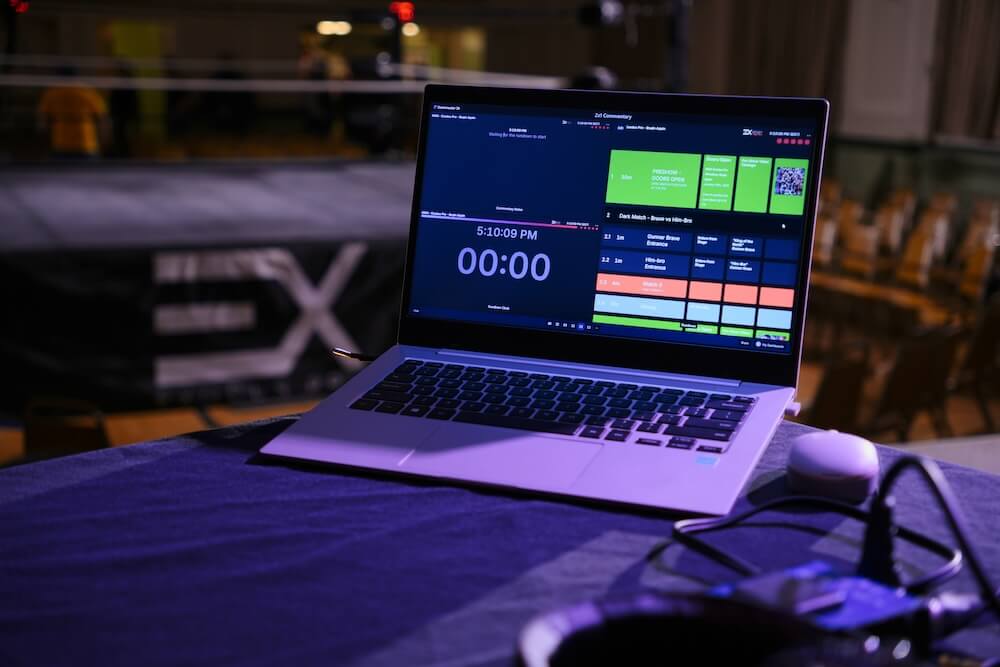Use case: Professional Wrestling Broadcasting
• John Barker
New on the scene, but not new on the block.
The world of live wrestling production is a whole different animal—part sporting event, part soap opera, part live theatre, combined with the chaos of a rock concert. From juggling multiple crew positions to managing a huge roster under the pressure of a live TV broadcast, it takes precision, coordination and flexibility to keep the production on target.
We spoke to Jerrod Zevnik, Production Consultant, about how he has kept production quality high—right from their very first show.

Overview
NWA Exodus Pro Wrestling is an independent wrestling company founded in 2023 by the professional wrestler EC3. It is also the inaugural territory affiliate of the historic National Wrestling Alliance (NWA), whose rich history spans 76 years.
Live video production is an important part of Exodus Pro’s strategy to build brand awareness, entertain an audience, and introduce fans to undiscovered talents in the realm of professional wrestling.
Given their affiliation with the institution of the professional wrestling world, Jerrod had to ensure that all productions were run with a televised broadcast mentality. That’s a tall order, especially for a new organization.
Check out the excellent production quality from the team:
Watch more on the NWA YouTube Channel.
Challenges
Their first few shows
As with any new team, the priority early on was to focus on organization, communication, and controlling the chaos as best as possible.
Initially, the only document keeping the team together was a 15 to 20-page script mainly focused on the wrestling talent and storytelling aspects. As comprehensive as it was, it still lacked production elements.
The first few shows went like this: Cues were missed. People frantically flipping through pages of notes. Time was lost to distractions. The crew wasn’t sure where they were in the show.
There were a lot of ‘Where are we? What’s happening next?’ questions.
Needless to say, events started a little late and ran a little longer than desired.
Staying on the same page
Professional wrestling is on the opposite end of a scripted, predictable show. With all its moving parts and multiple crew positions, keeping everyone on the same page with a printout was a real challenge. One fine day, someone dropped a script that wasn’t stapled in the middle of a show.
It became glaringly apparent a better solution was needed.
Jerrod then condensed everything into a more manageable two-page rundown sheet with production cues, which solved the problem of dealing with too much paper. But that came with its issues when changes occurred.
A Need for a Better Solution
After the third live event, Jerrod began looking for a proper run of show software. The options available mainly were software that ran locally—which meant running a network, extra monitors, and more setup time—which didn’t quite align with the resources of a small crew.
His search for a solution led him to Stagetimer.io, a web-based platform for managing cues and timing. From there, he discovered Rundown Studio, which is wholly production-focused and runs from a web browser.
Several features caught his eye. Compelling reasons were the flexibility to generate unique outputs for different departments and the freedom to update the rundown on the fly in the middle of a show. The software would handle over/under timing calculations. Images could be uploaded. The crew could load the rundown on their phones, tablets, and laptops. And everyone will always have access to the latest rundown version on their devices.
That translated into a smaller setup burden for the crew, and with shows staying on target, everyone could go home on time. It all sounds and looks good, but what’s next?

Making the Switch
No-strings-attached trial
A crucial factor in their decision-making was the ability to test drive the software before committing. The free version of Rundown Studio was robust enough for live testing on a budget-constrained show, which reduced the risk of switching to new software.
Jerrod first did personal testing during a live event to judge its viability. He then introduced Rundown Studio to the producer and director in the next show, which built the team’s confidence in the product.
That was the first show which started exactly on time and finished on time.
Integrating Rundown Studio
After the successful trial, the team started using Rundown Studio in pre-production planning. Subsequent shows included using the rundown features to build out a show, and over time, more crew members were sent the link to the rundown during the broadcast.
The initial stages of integrating Rundown Studio were fairly seamless.
It didn’t take much explanation for the crew to understand and start using Rundown Studio immediately. The crew embraced the new software. Finally, they had the tools to stay on top of the show. Everyone could tell where we were in the show flow, how long a segment would take, the upcoming cues, and what they each needed to do.
The customizable outputs for specific departments, on-the-fly updates, teams all working from the same clock and document, QR code scanning links, and the ability to access the rundown from anywhere in the world… all of these features have been exceptionally useful.
Easier than expected
Jerrod shared the story of a new segment producer who missed the production meeting before going live. This could go one of two ways.
“They walked up, saw Rundown Studio on a monitor, and asked, “What is this? Is that our timing?”
The new segment producer then closed the stopwatch app on his phone and began calling the show based on what he saw on the screen. It was seamless. No explanation was needed—no steep learning curve and not a single missed cue.

Comparative Insights
Last-minute changes
The bane of professional wrestling (and the death of any paper spreadsheet Rundown) is the phrase, “Card subject to change.” This standard industry practice meant that the advertised lineup of matches and wrestlers could change at any time—even multiple times in the middle of a show.
We work with up to 30+ different talents on a single show. Flights get canceled, vehicles break down, illness occurs, or the unfortunate situation where people get injured.
There was one particular show where the main event match had to be reworked due to unforeseen circumstances. Things were still being solved well into the live show. This would have caused mayhem amongst the crew in the past, but it was a non-issue with the live update features of Rundown Studio.
Once things had been figured out, the rundown was updated so everyone knew their cues, and there was zero confusion when the time came to execute. All of this was done with minimal verbal communication.
Collaboration and planning
During pre-production, the director mentioned that with just a Rundown Studio link, he could prebuild graphics and get an overview of the timings and flow. Planning and visualizing show elements from one unified rundown gave him absolute confidence to execute the show. In a subsequent livestream broadcast, he pointed out that the show went by like a breeze considering the large number of segments.
Jerrod adds, “Rundown Studio has helped us immensely with staying organized and allowing quick adaptation as a show changes. Having a unified, updated document that all positions can work from pre-production through wrap has been invaluable.”
P.S. That director has since begun implementing Rundown Studio into their other productions.
Feedback
Excellent customer support
From Jerrod’s point of view, a vendor’s support as a valued partner can make or break the implementation of new solutions. During a version update launch, he discovered a few quality-of-life issues that affected the user experience.
After reaching out to the team at Rundown Studio, lines of communication were instantly opened, and within hours, everything was resolved. That level of dedication is impressive and has me assured that the team cares about their clients and the reliability of their product.
His rating of our customer service? Above and beyond all expectations ⭐
Scales with a growing team
NWA Exodus Pro has standards to live up to as a territory affiliate. Their founder, EC3, tells every new talent, “This isn’t just a live event. This is TV, so treat it as such.”. Rundown Studio treats it as such.
As Exodus Pro expands and adds more team members, they are confident that Rundown Studio will continue to scale with them, streamlining production workflows and elevating their production to higher levels.

Summary & Outlook
Jerrod noted that Rundown Studio is versatile and powerful enough to organize conferences, podcasts, Zoom meetings, and the crazy carnival sideshow of a live broadcast of professional wrestling. The software’s immense flexibility and customization options work for events, broadcasts, and productions across industries.
His parting words for those considering Rundown Studio or its alternatives:
After brief talks with John Barker of Rundown Studio, I have confidence that the product will continue to be supported. The creators are listening to their users. Their willingness to collaborate to find and implement purposeful, useful features and foster ideas is a fantastic thing to see.
No matter the size or experience of your team, Rundown Studio empowers your team to achieve professional production quality from day one. Thank you for sharing these valuable nuggets of your expertise, Jerrod! We look forward to continuing to support your team.
Be sure to keep up to date across the NWA’s social channels:
- YouTube: youtube.com/@nwa
- Instagram: @exodusprowrestling
- X: x.com/ExoProWrestling